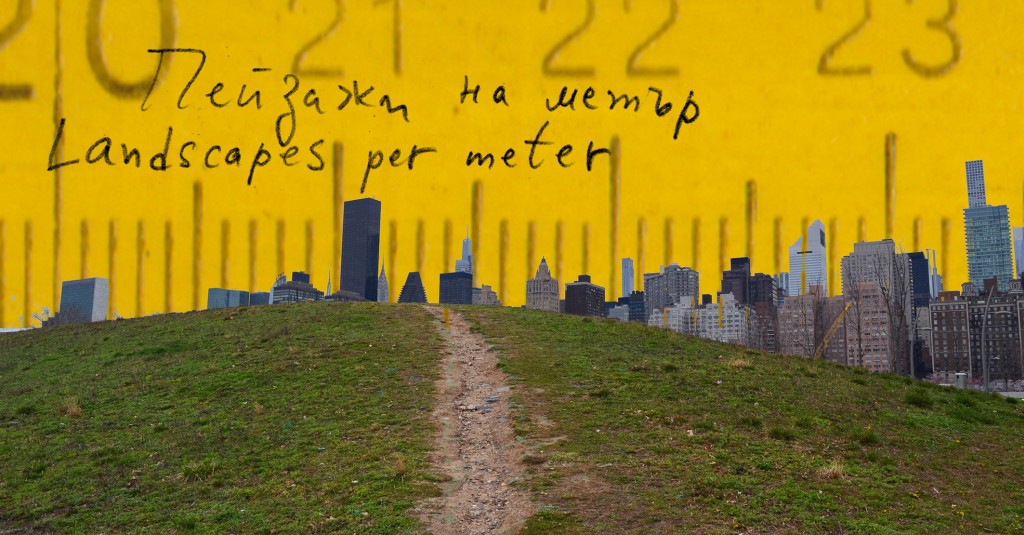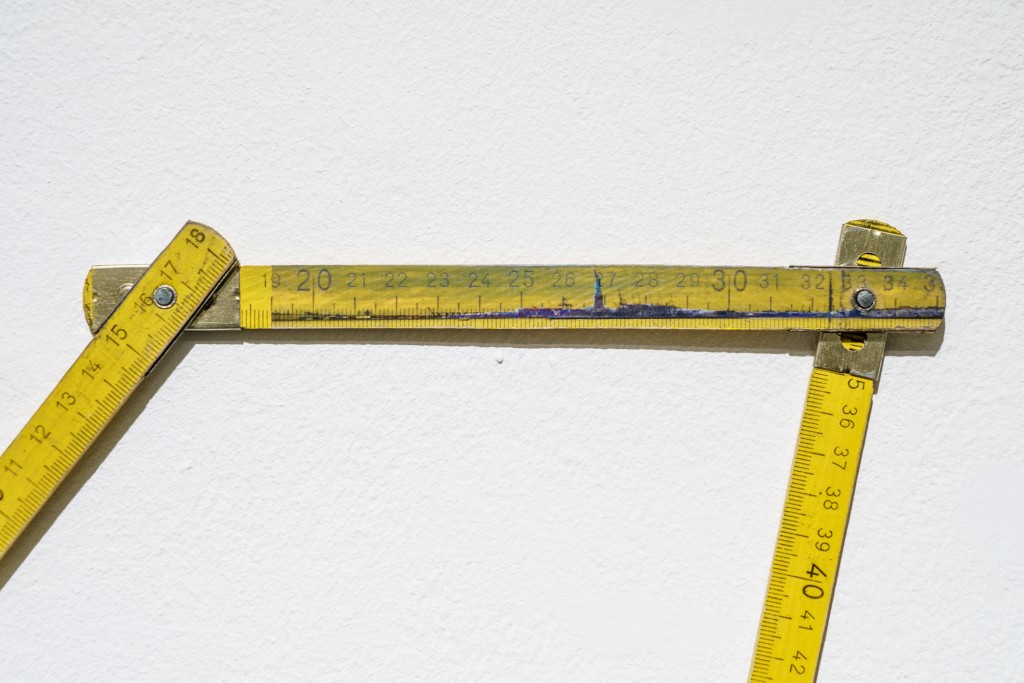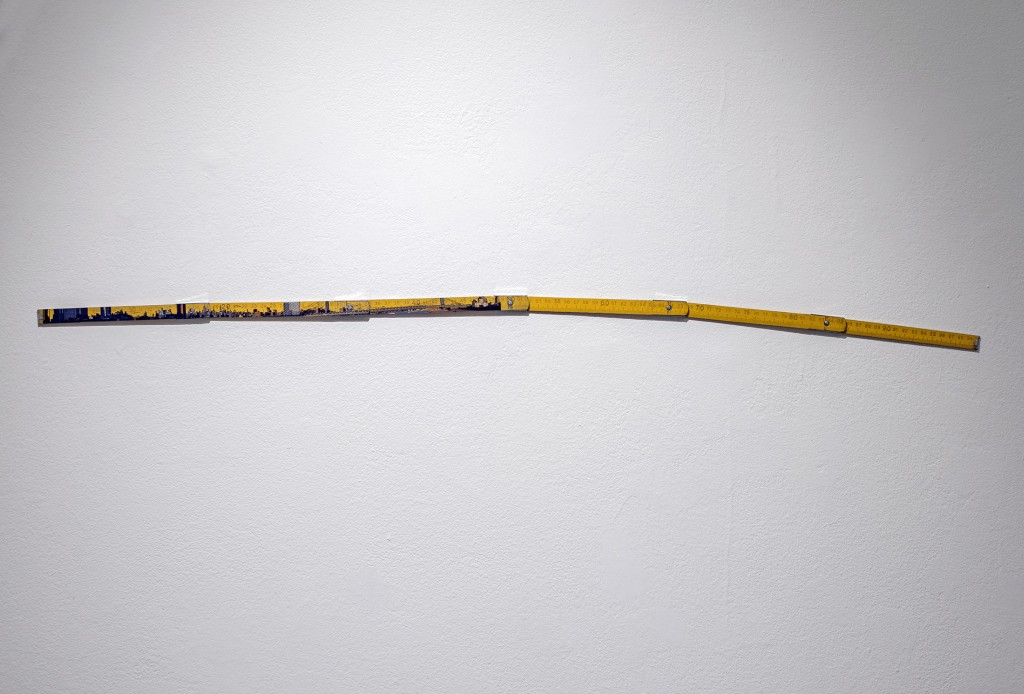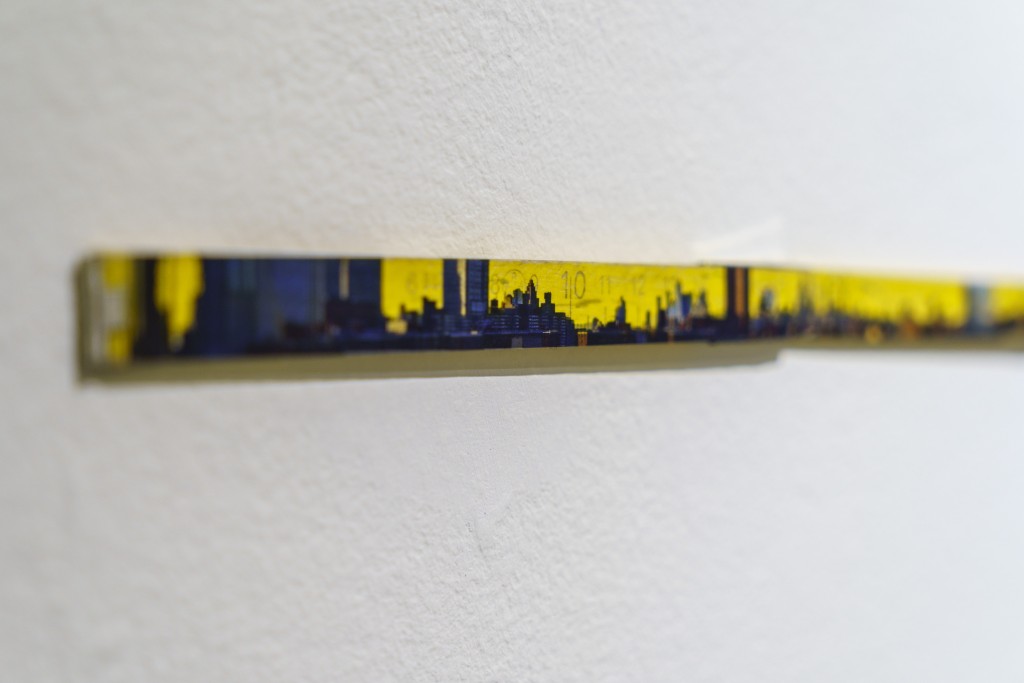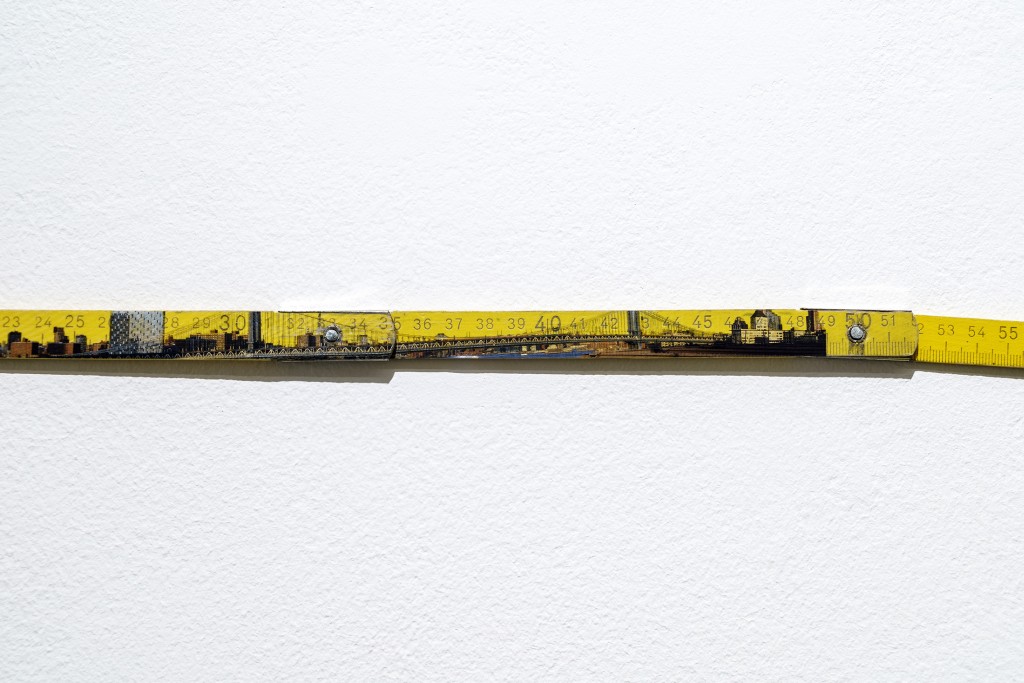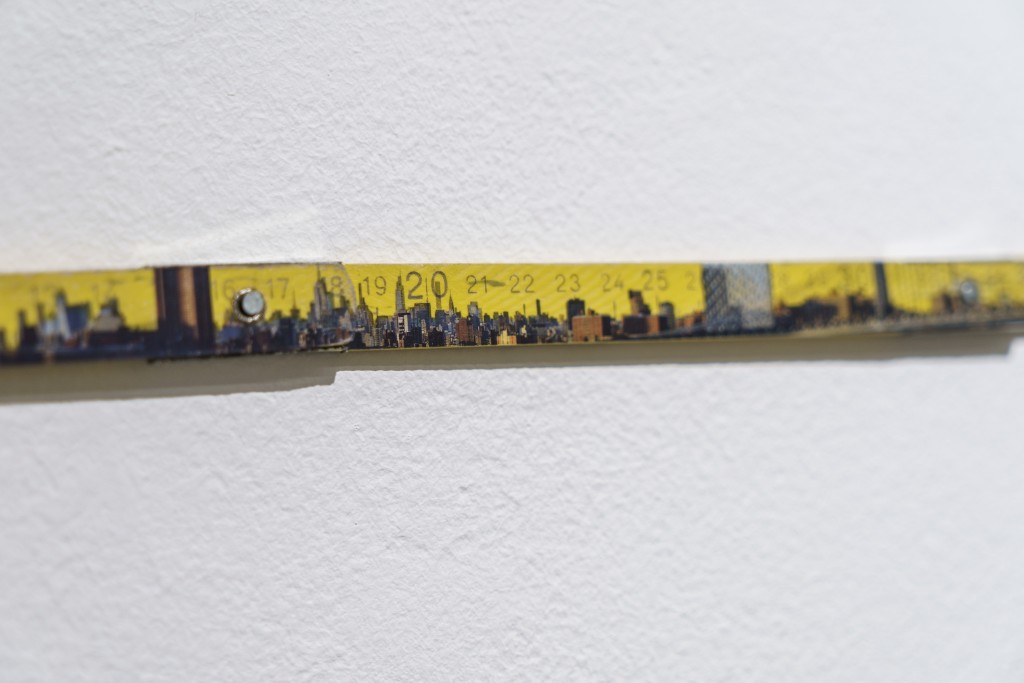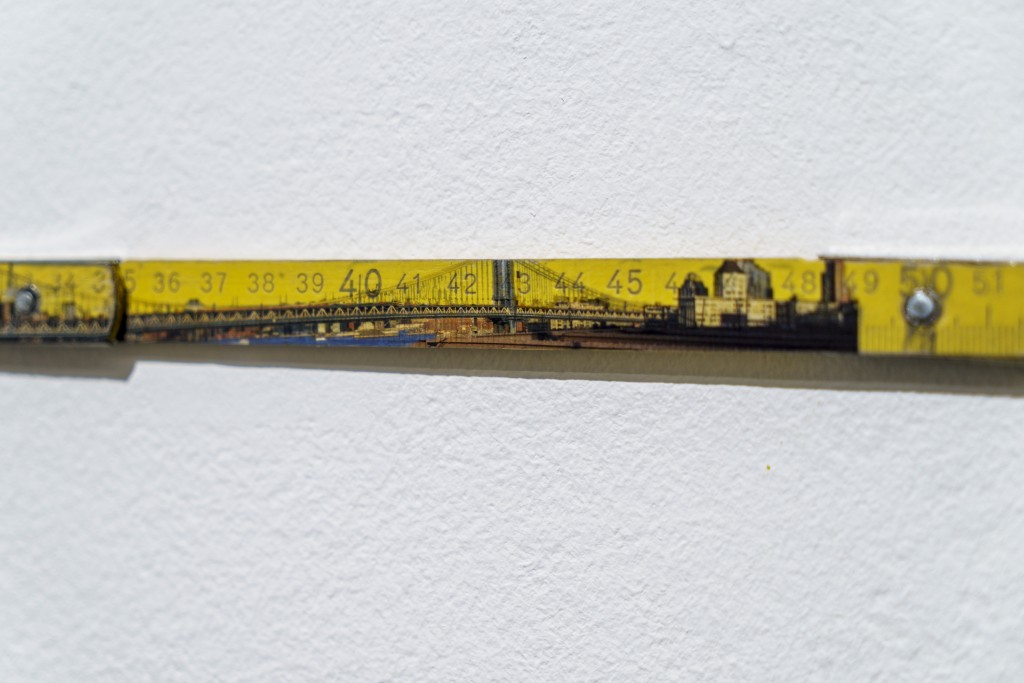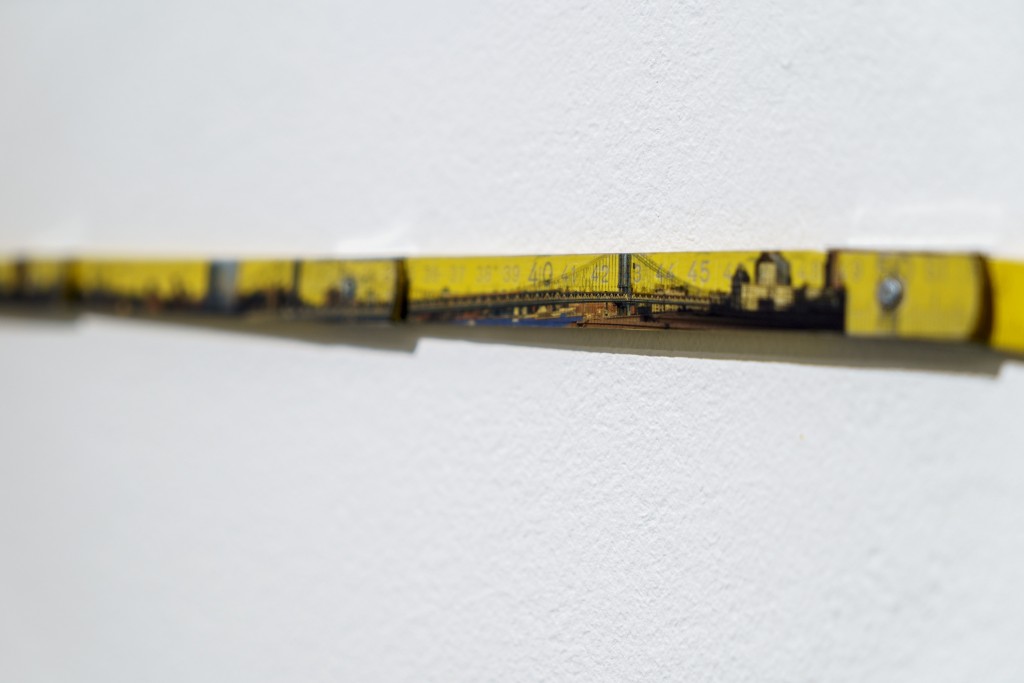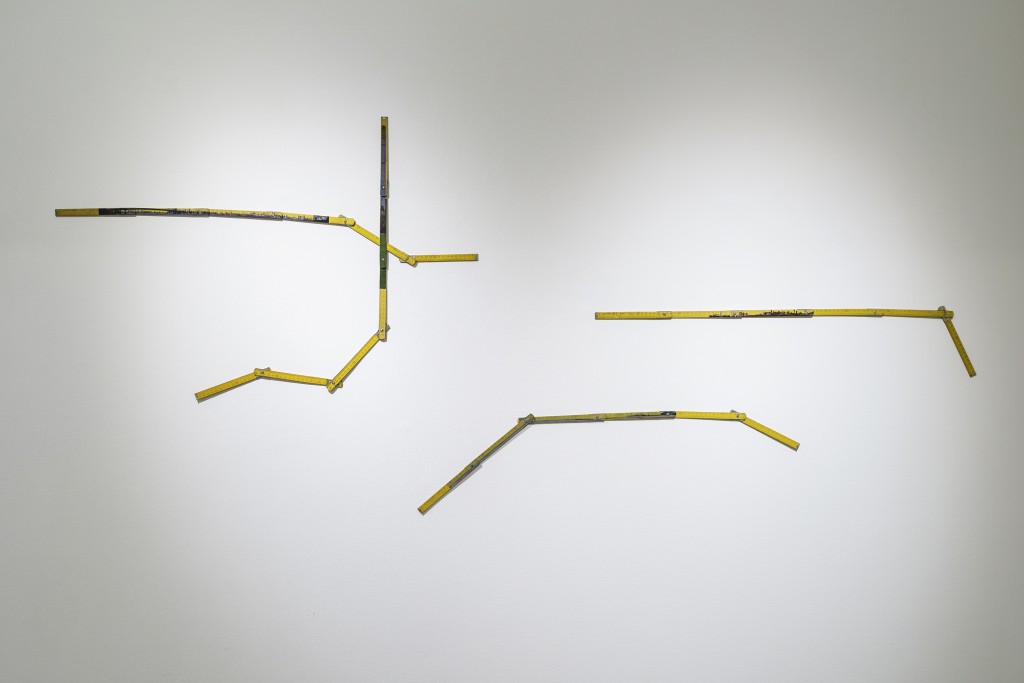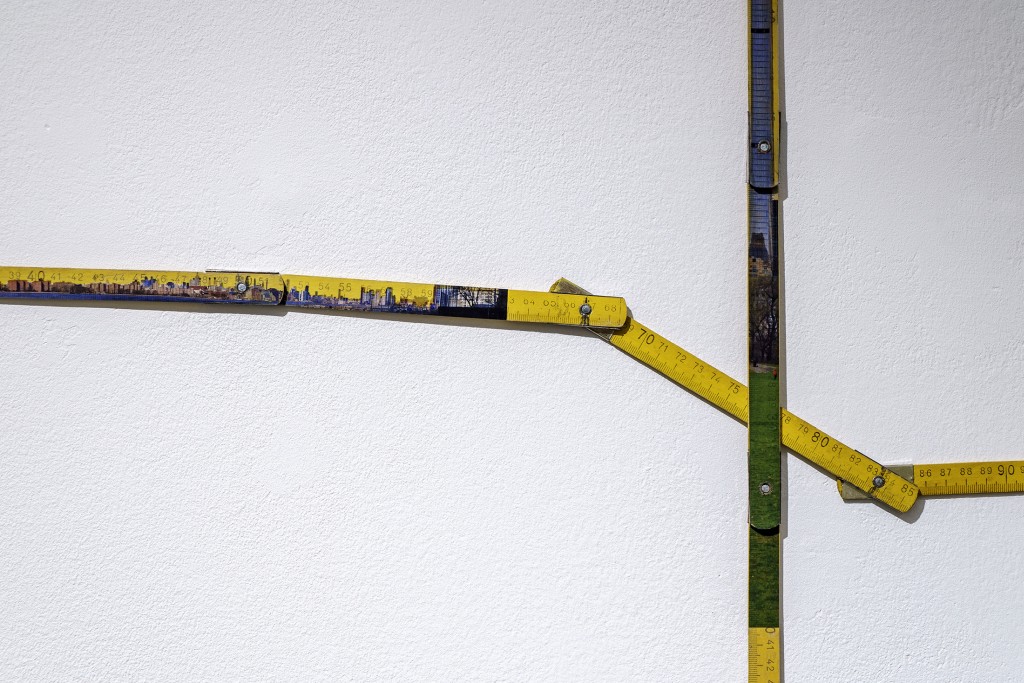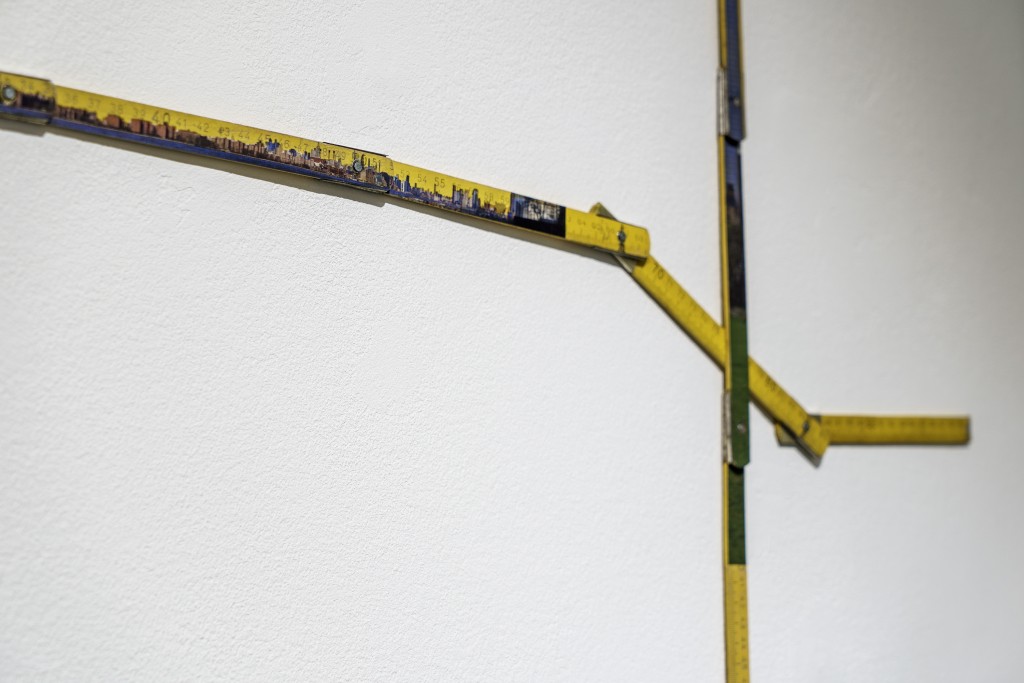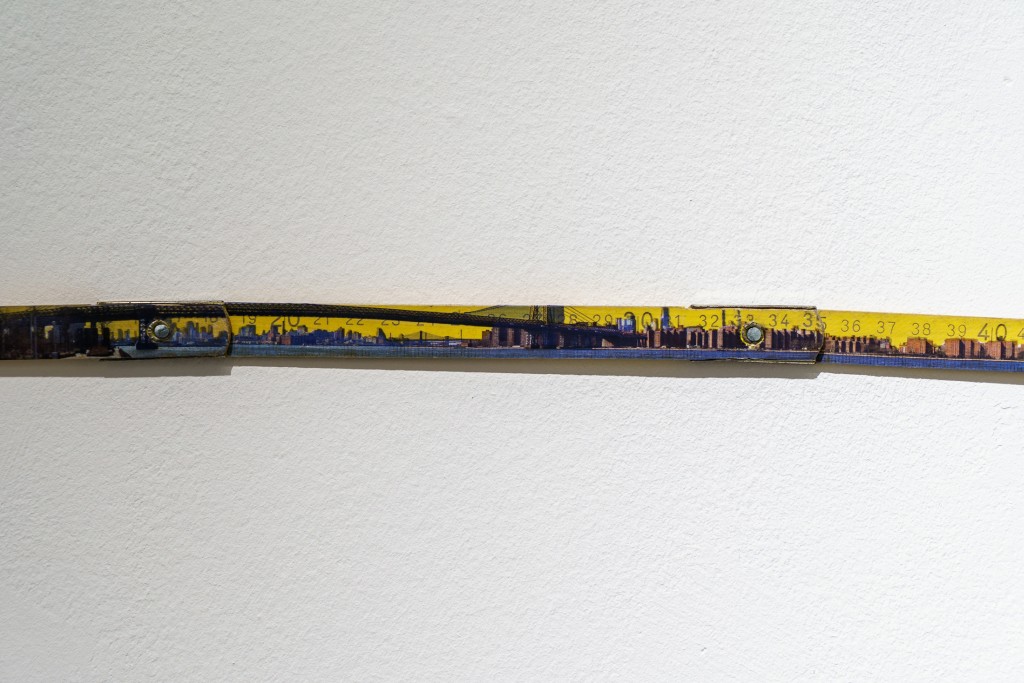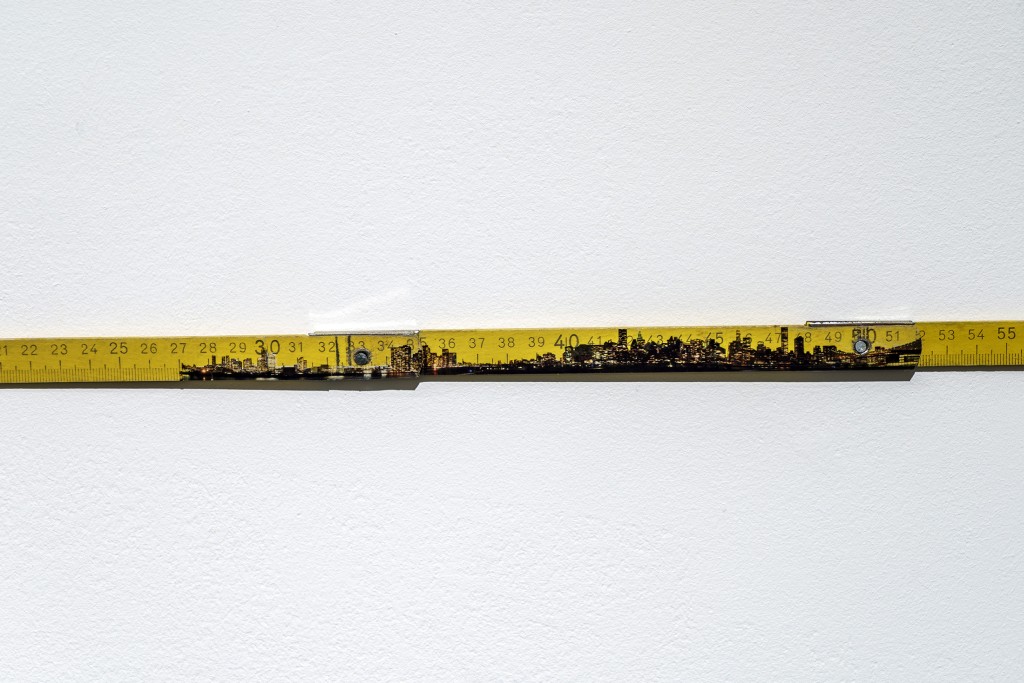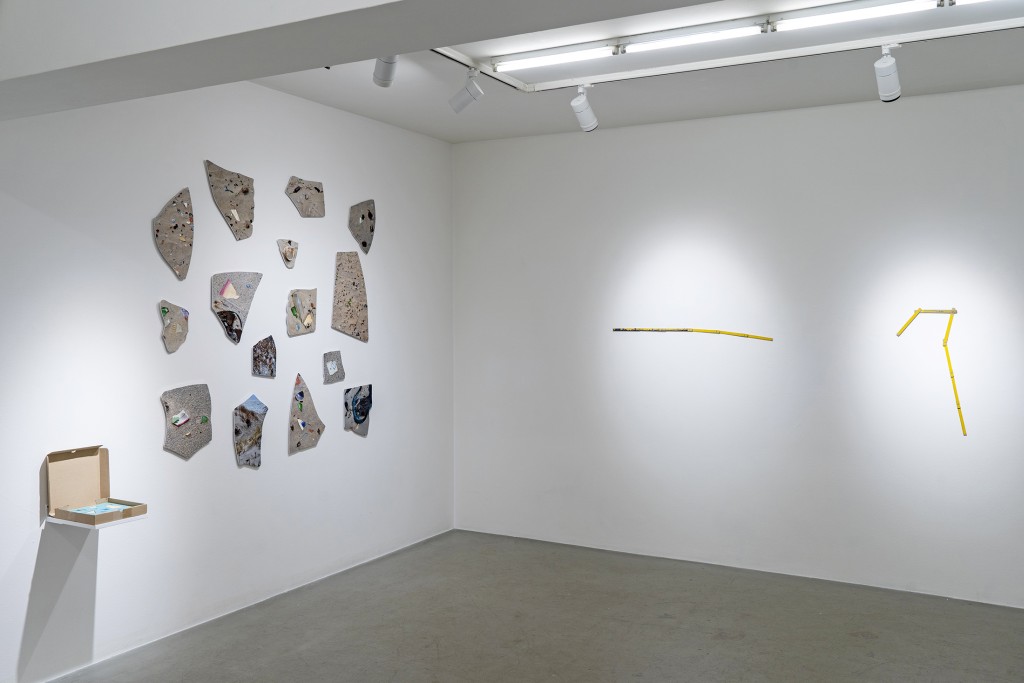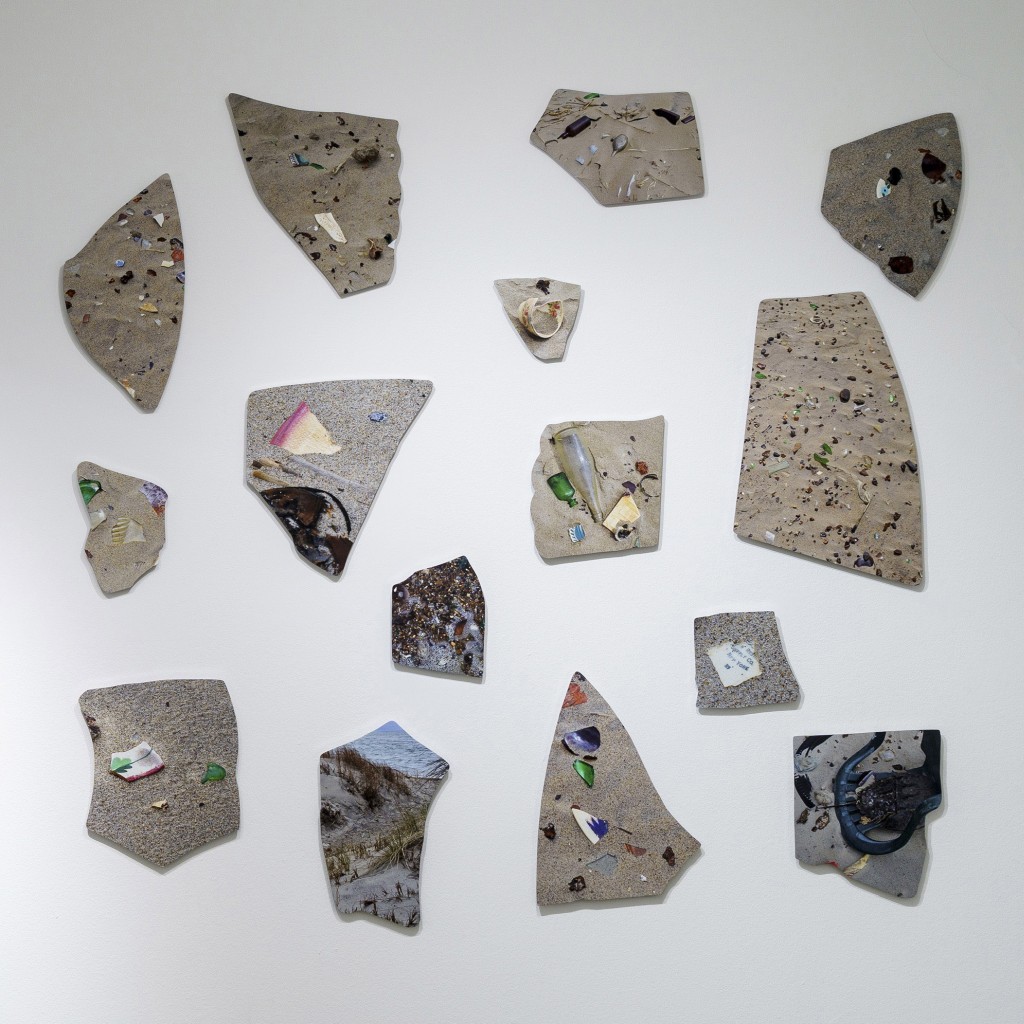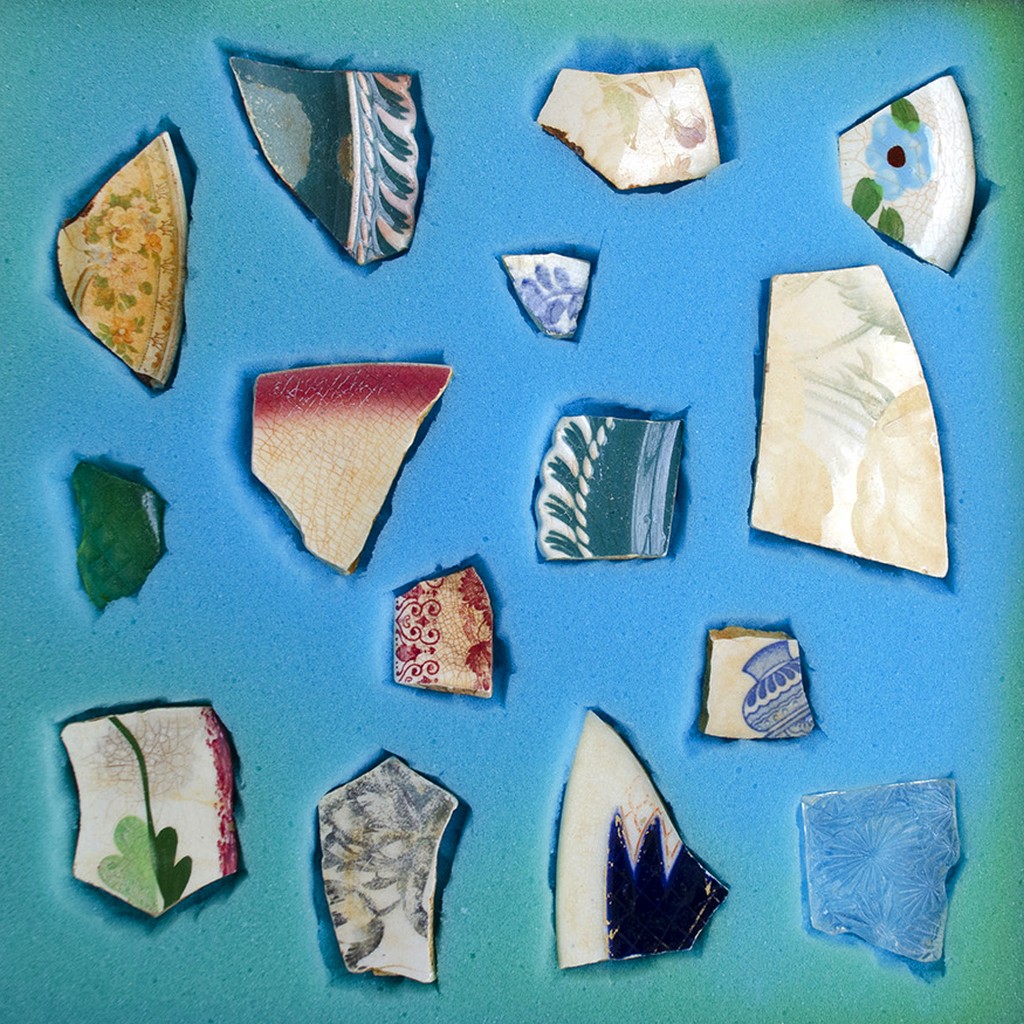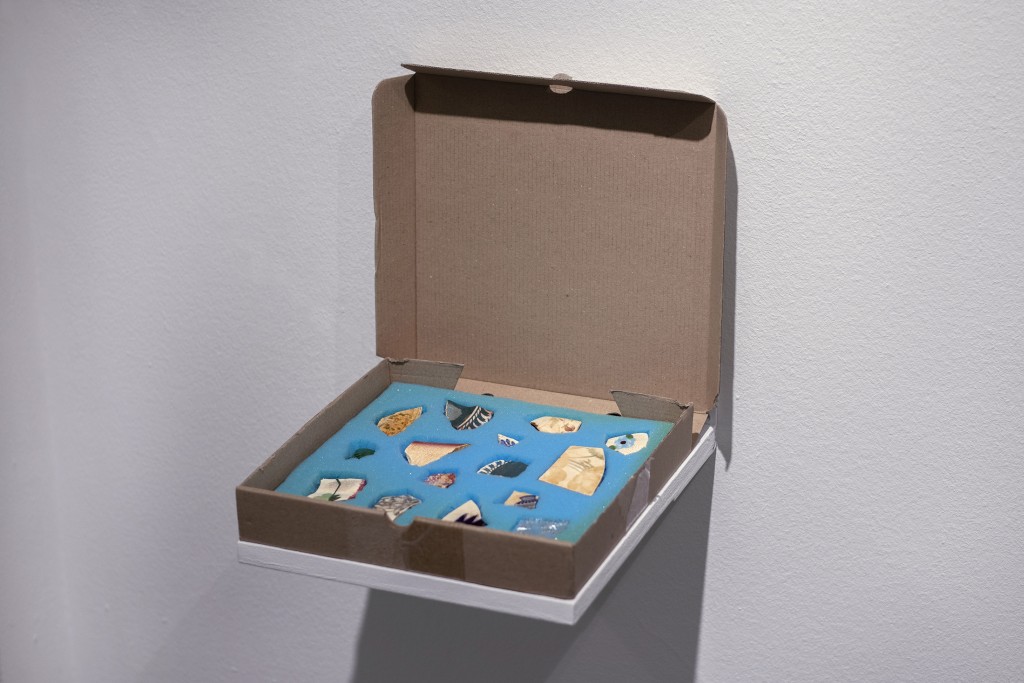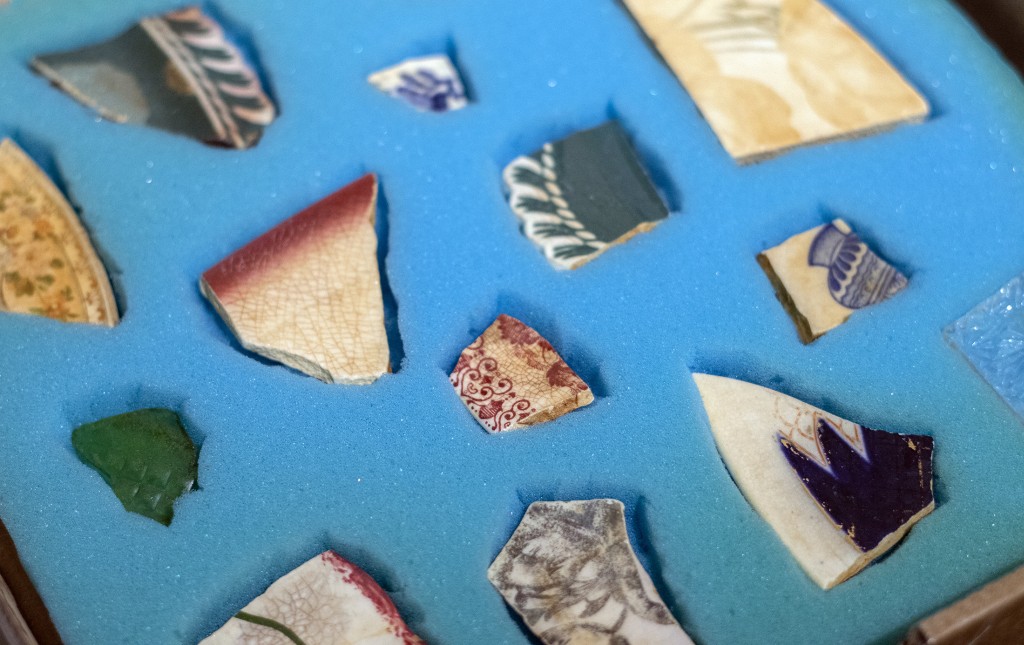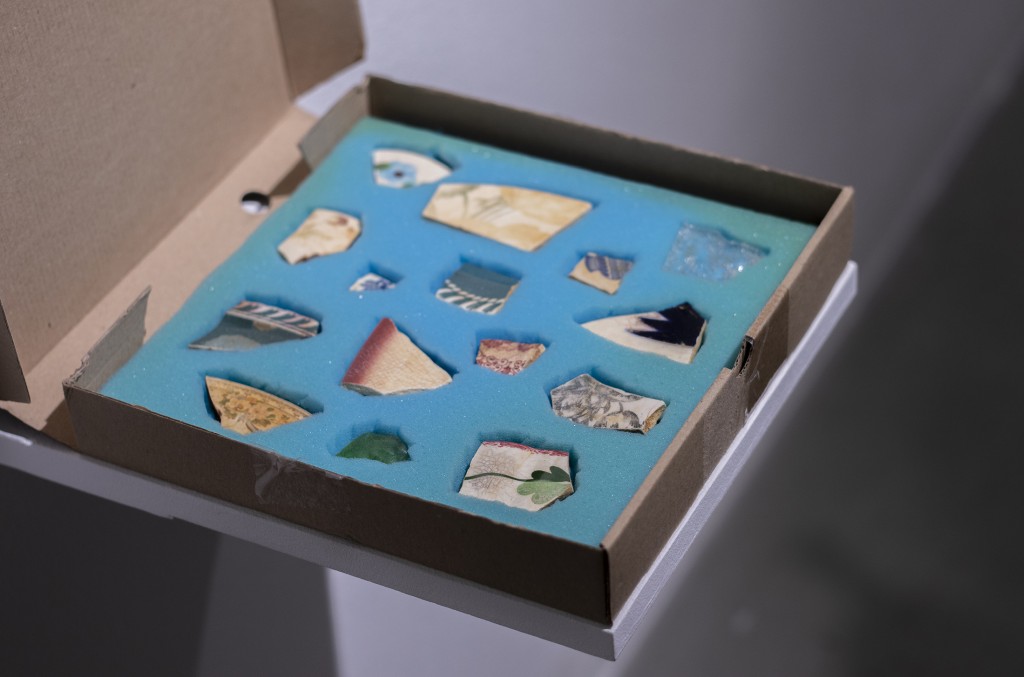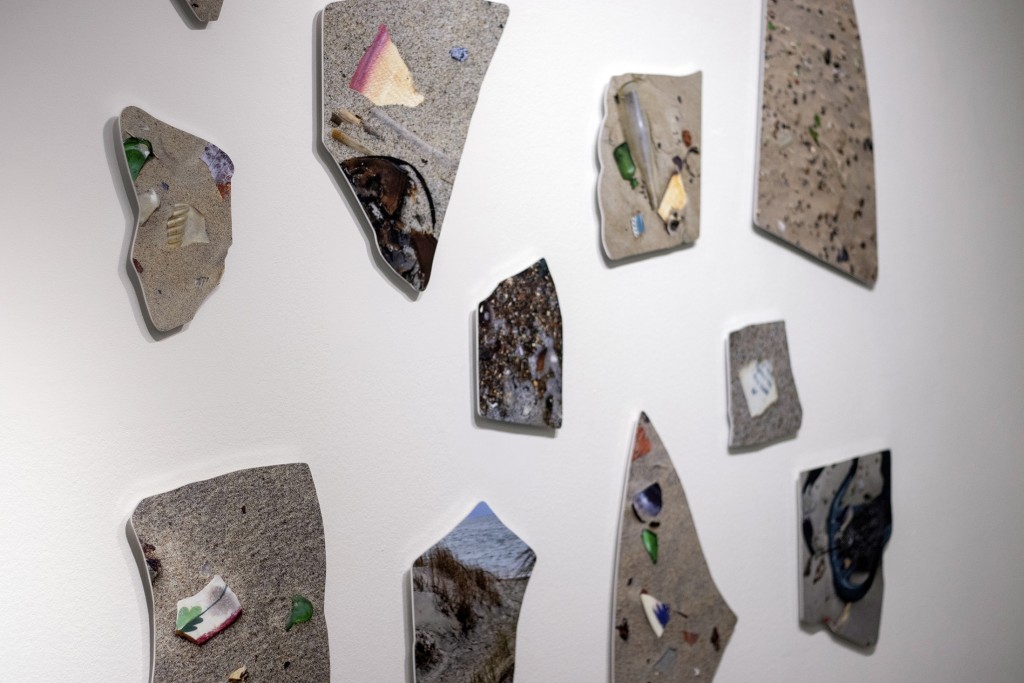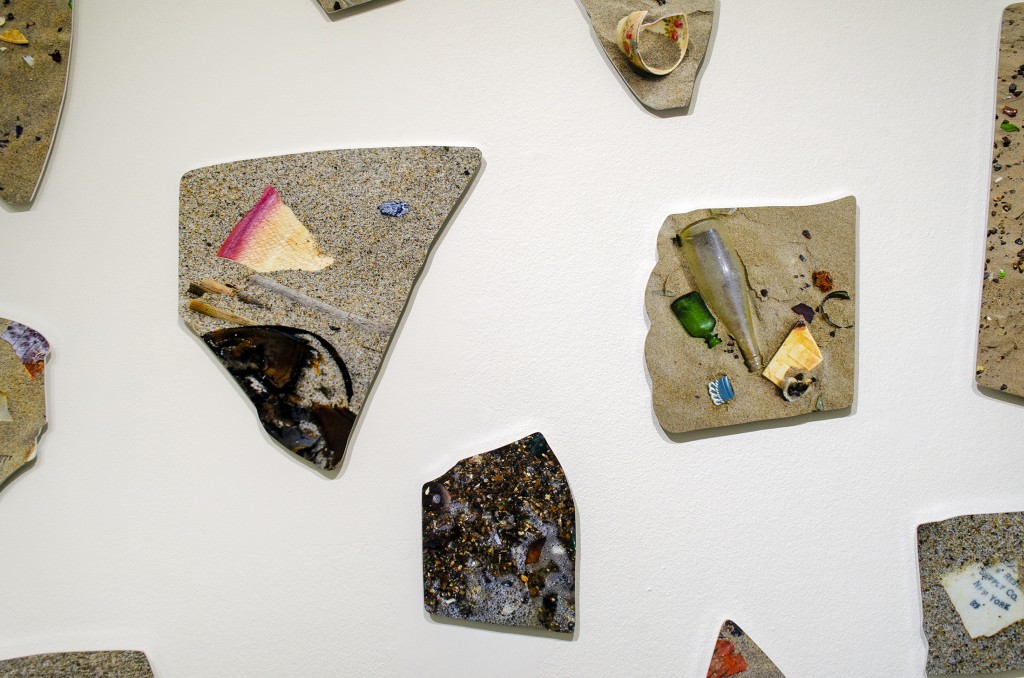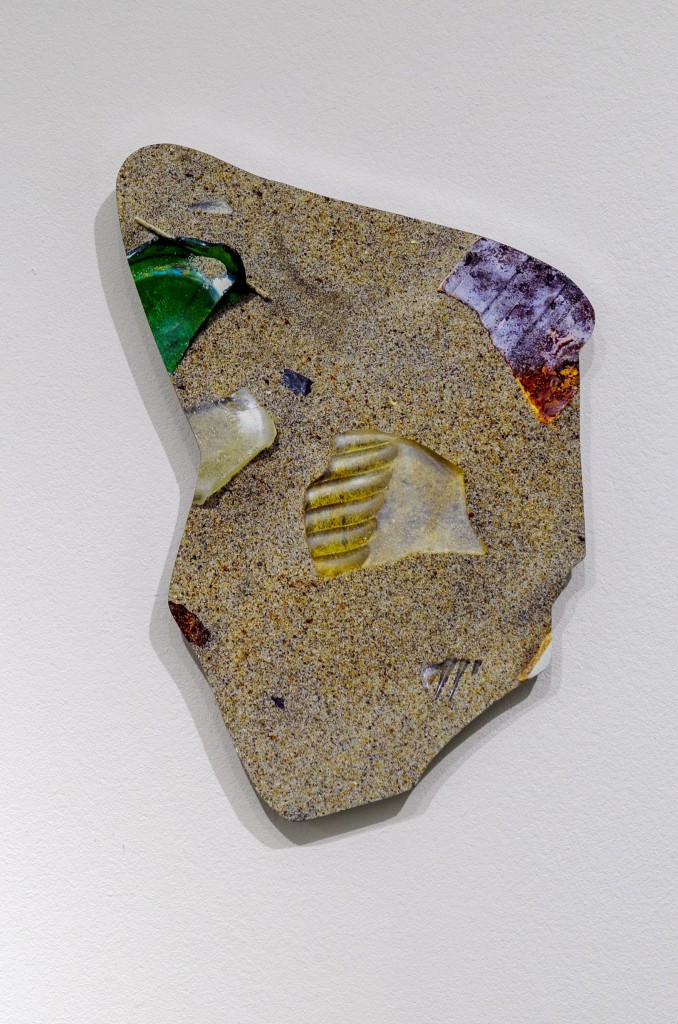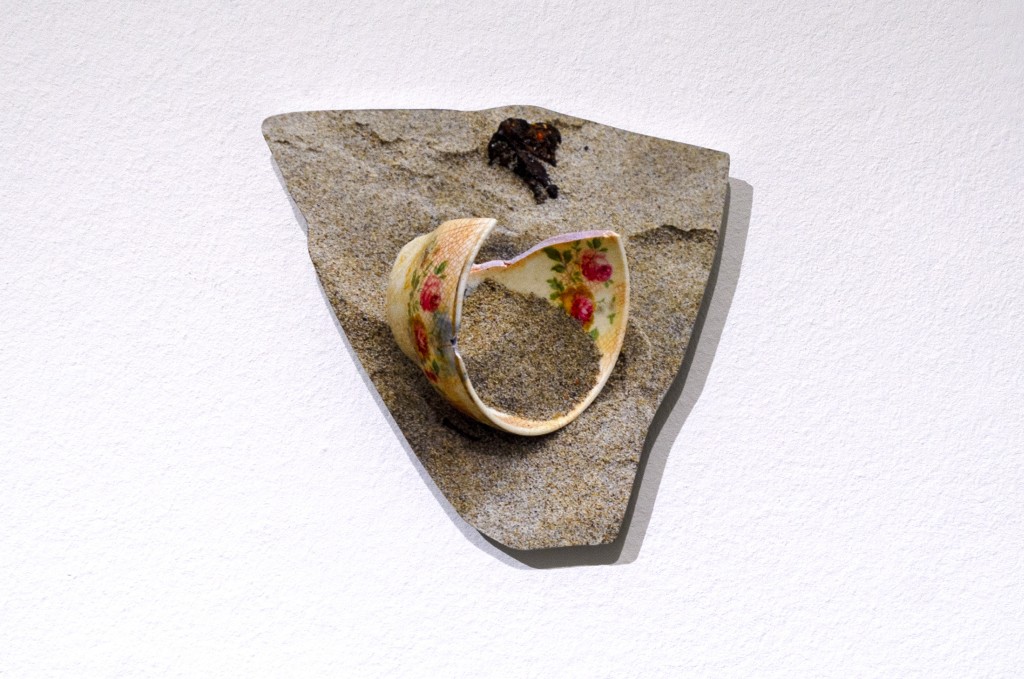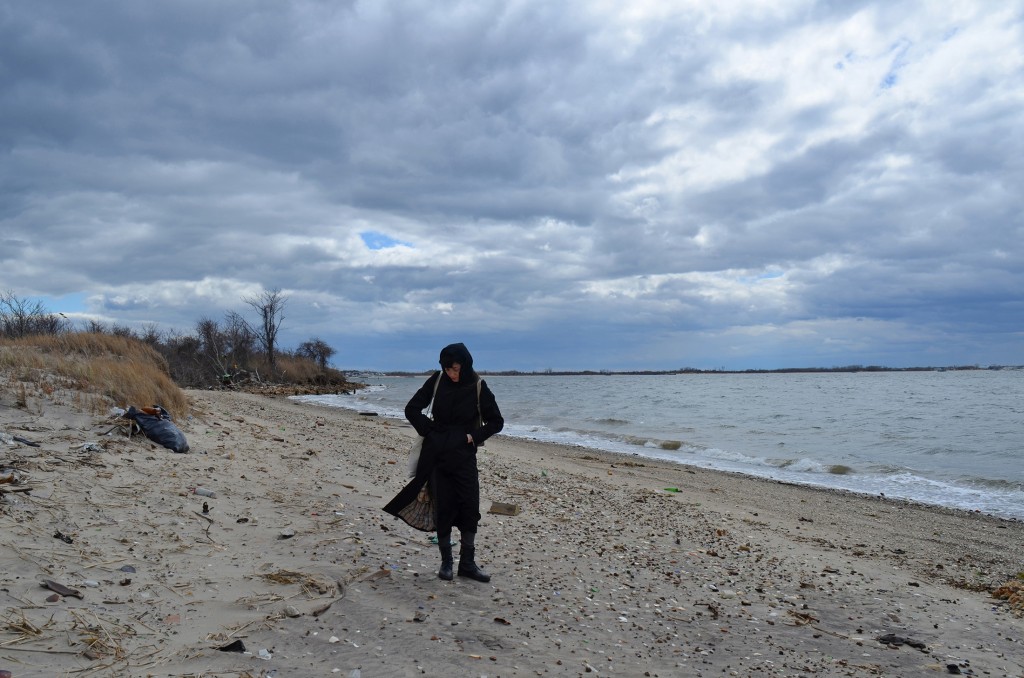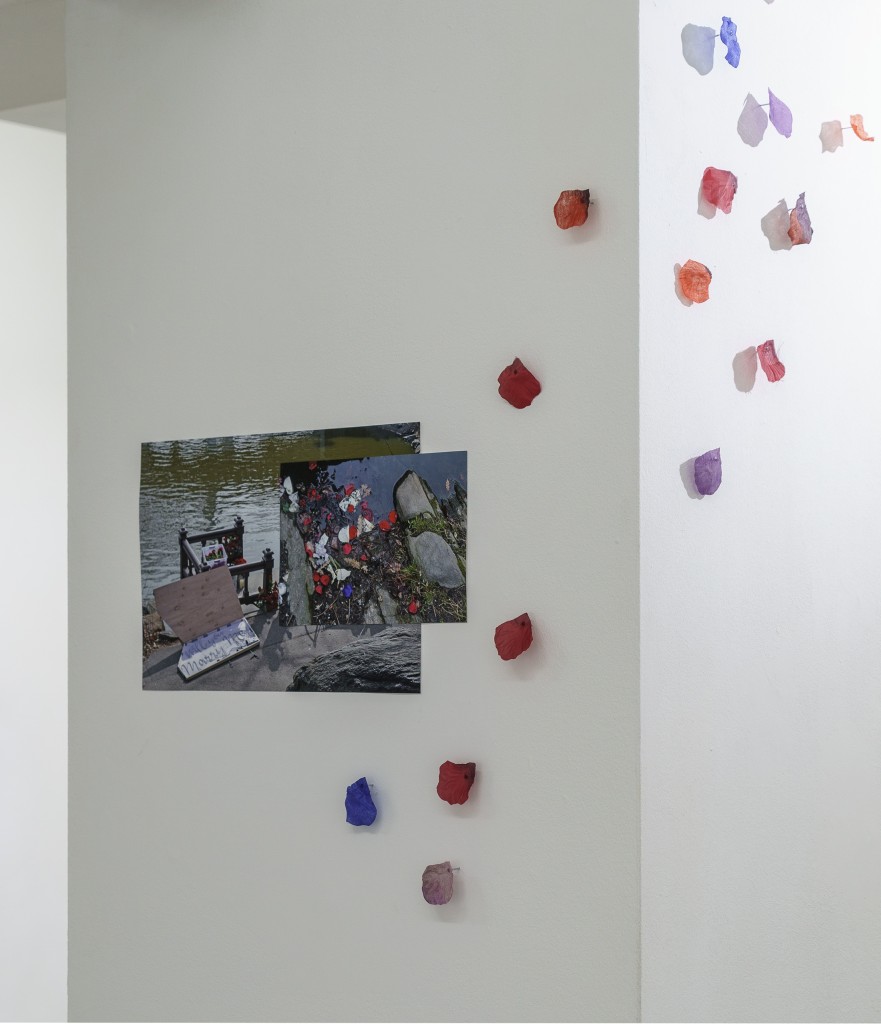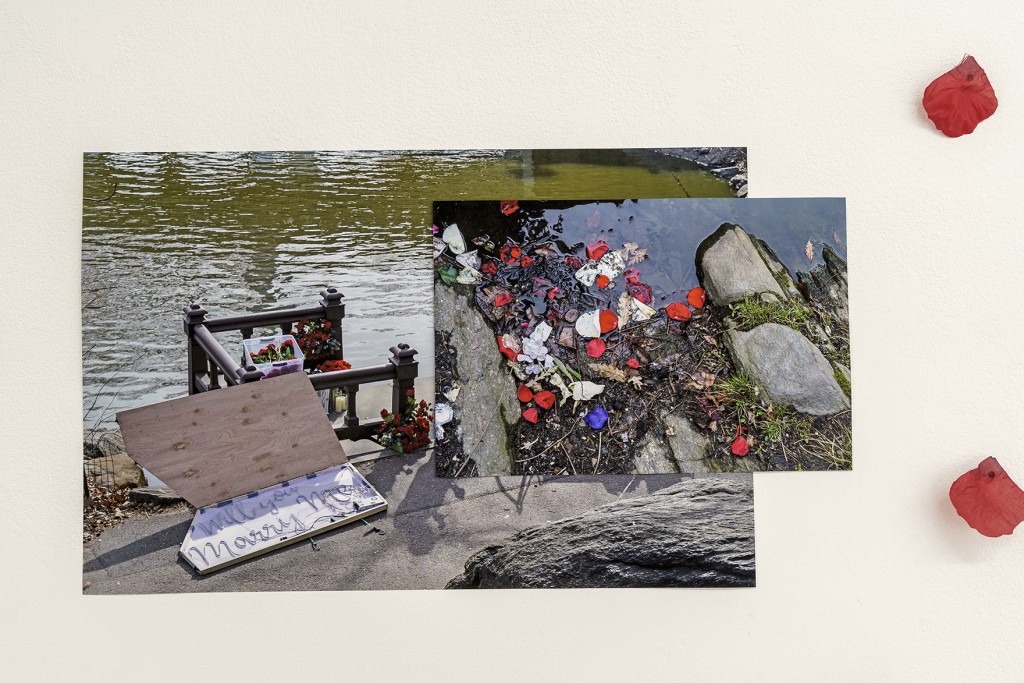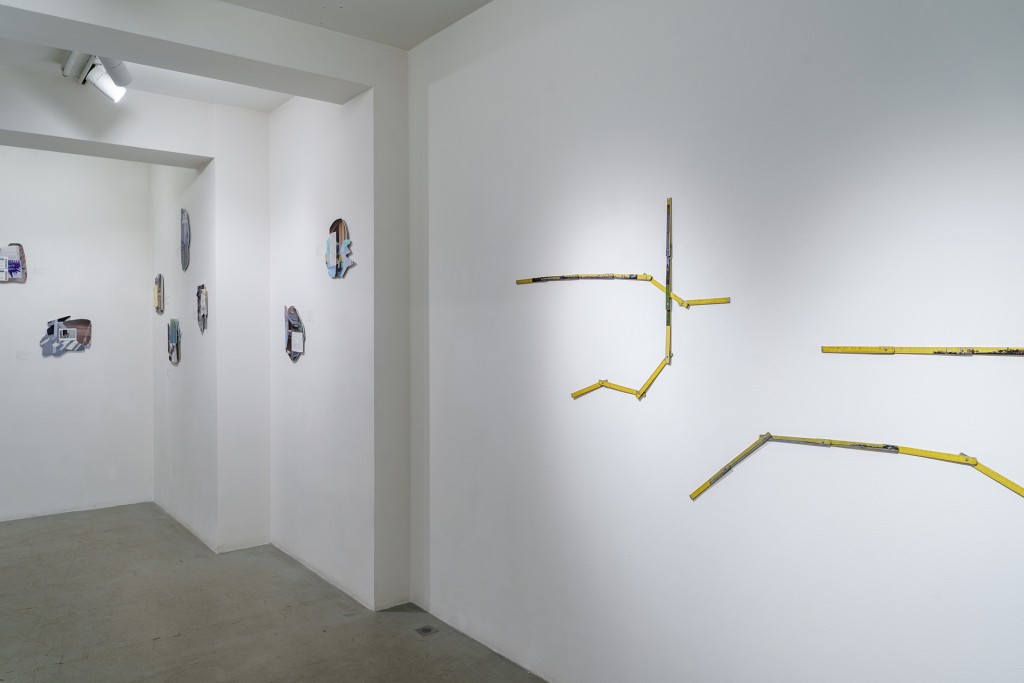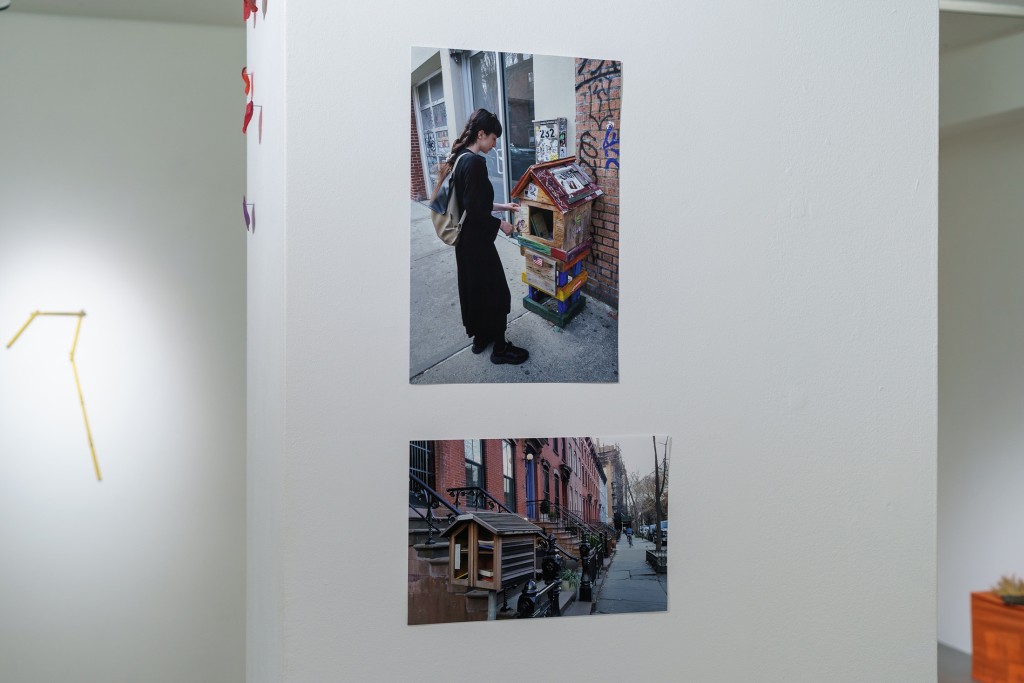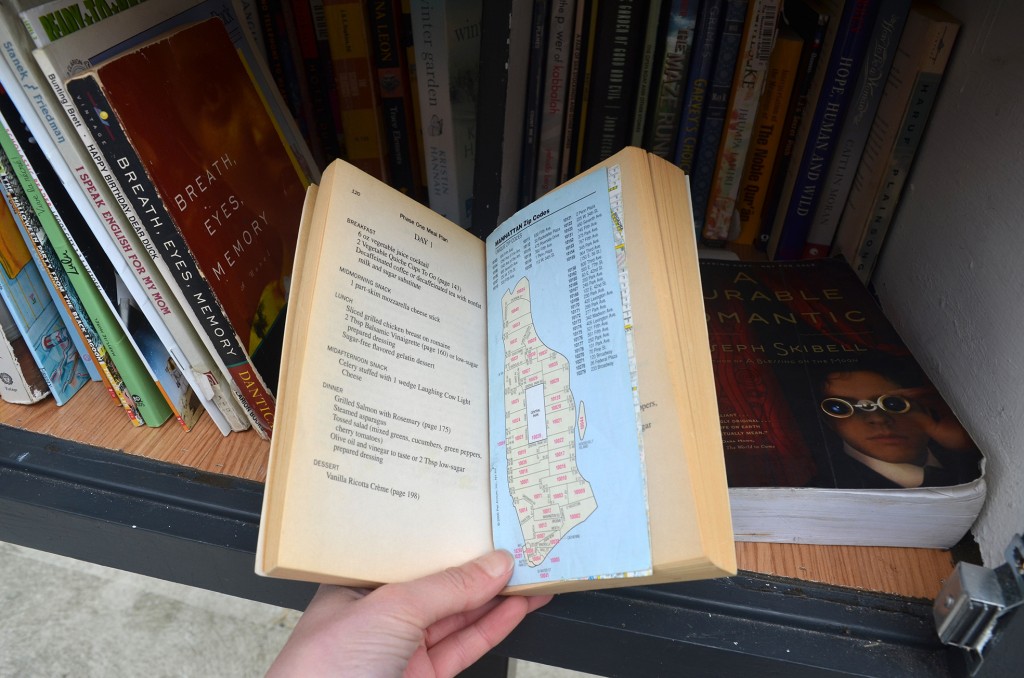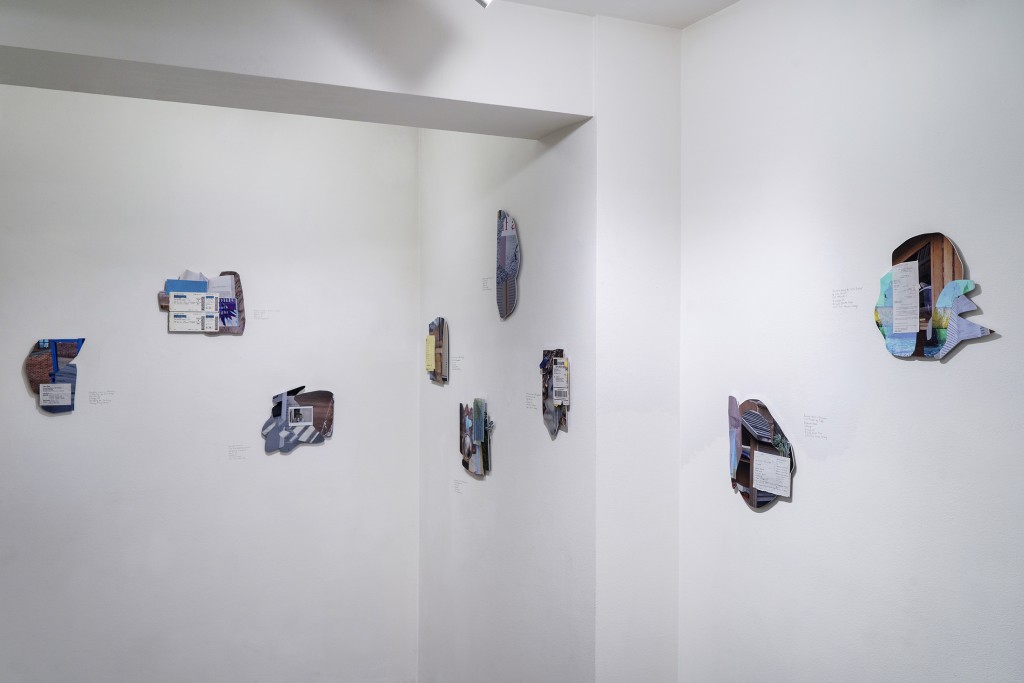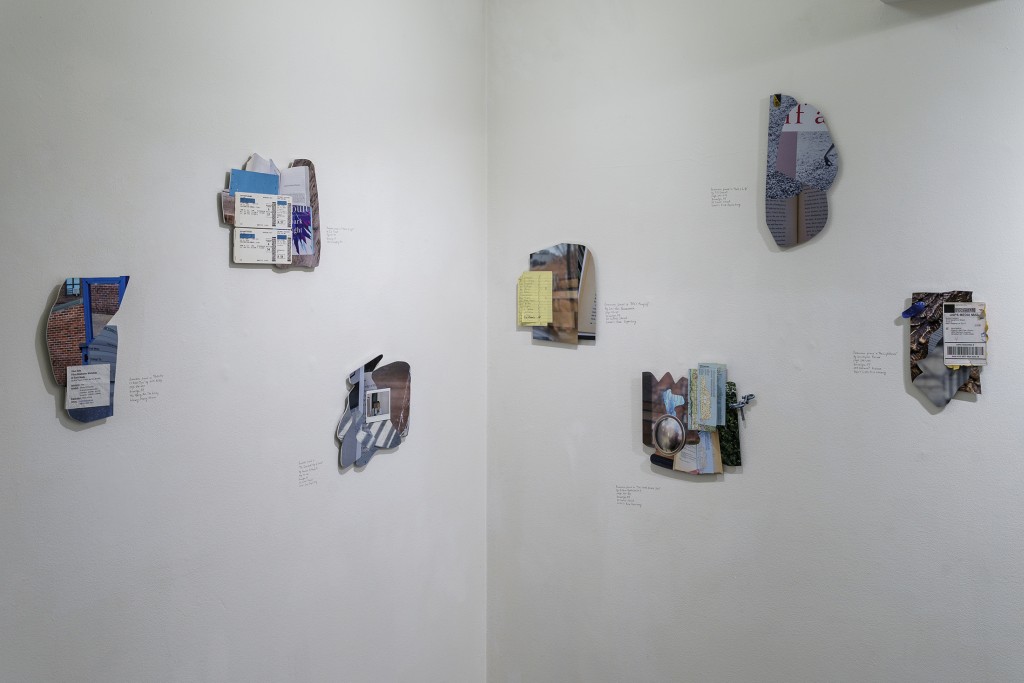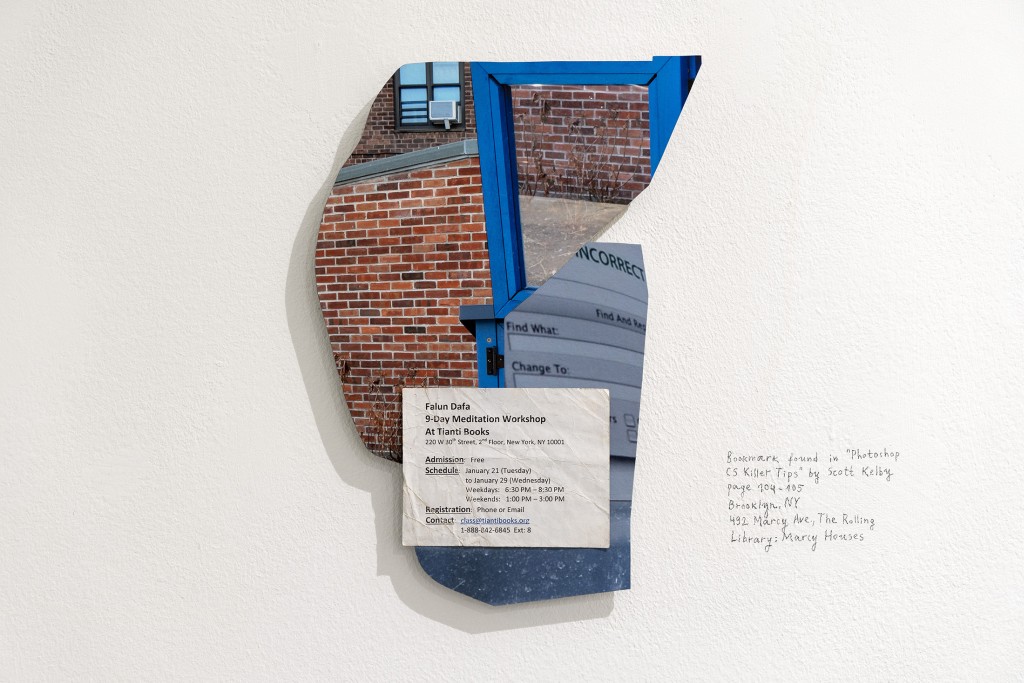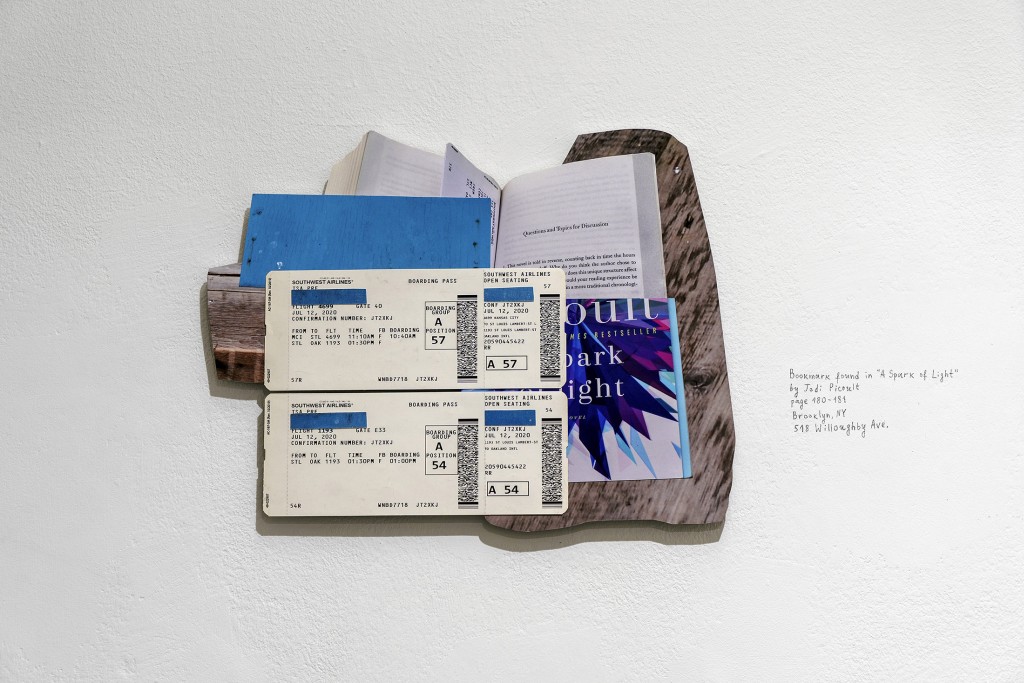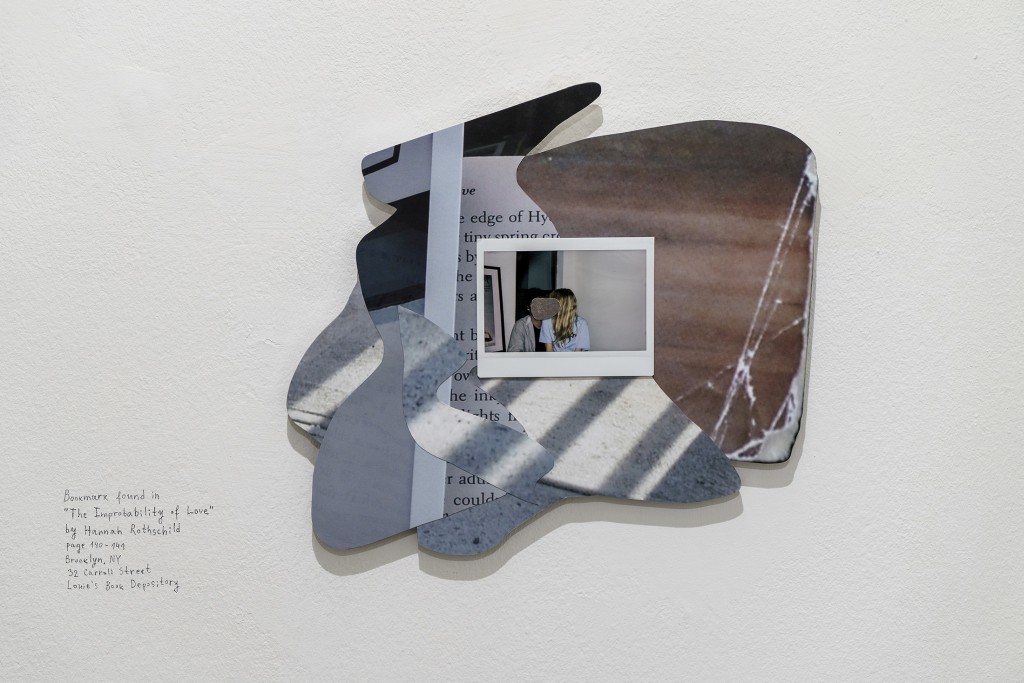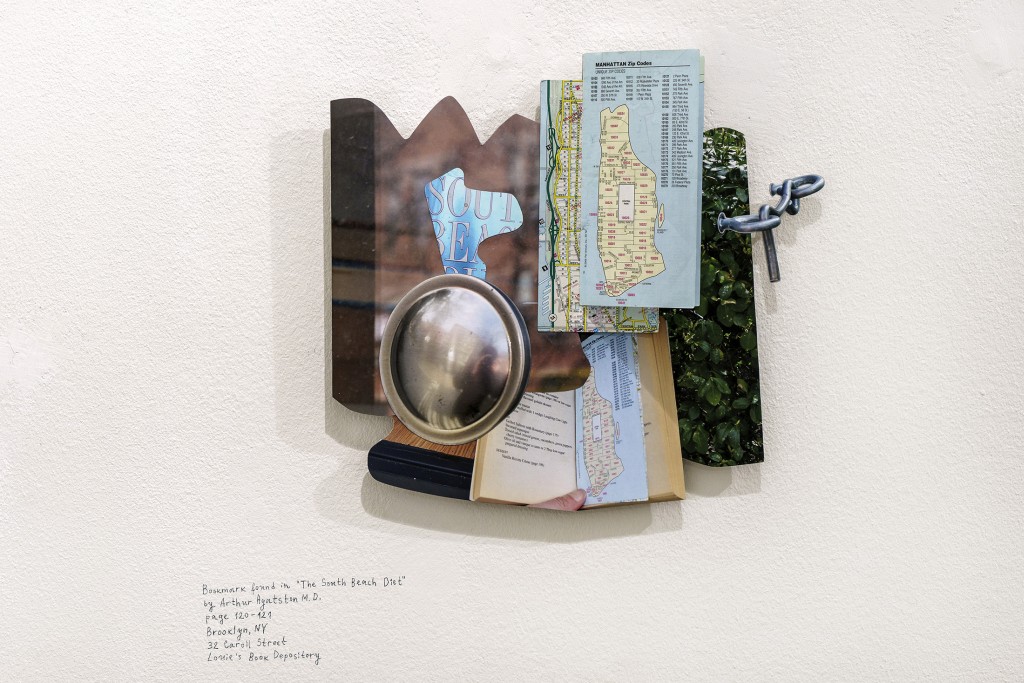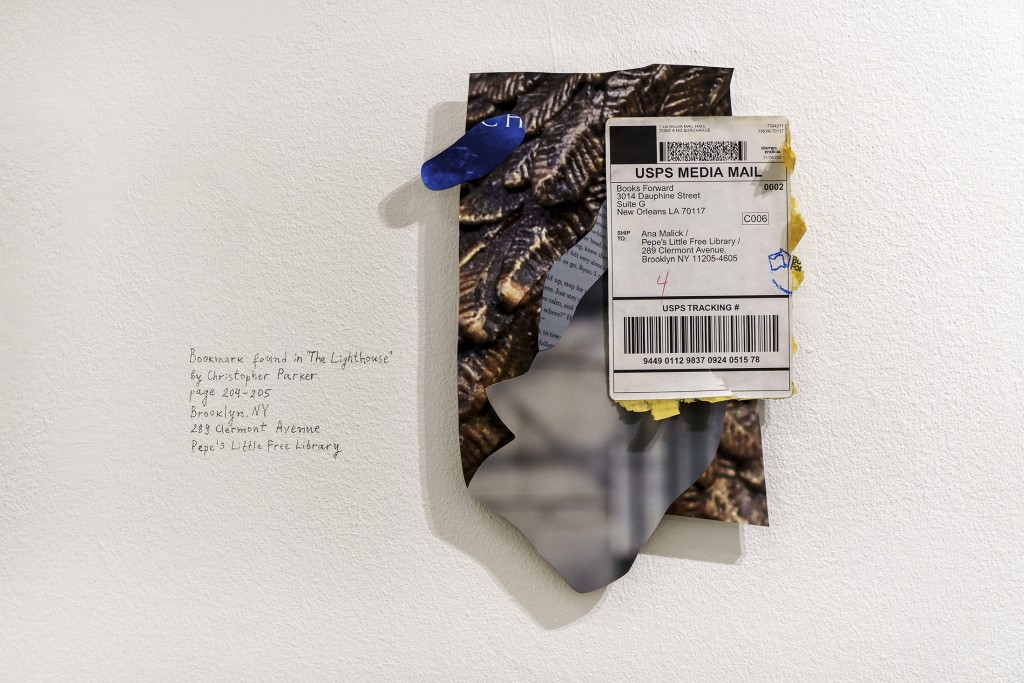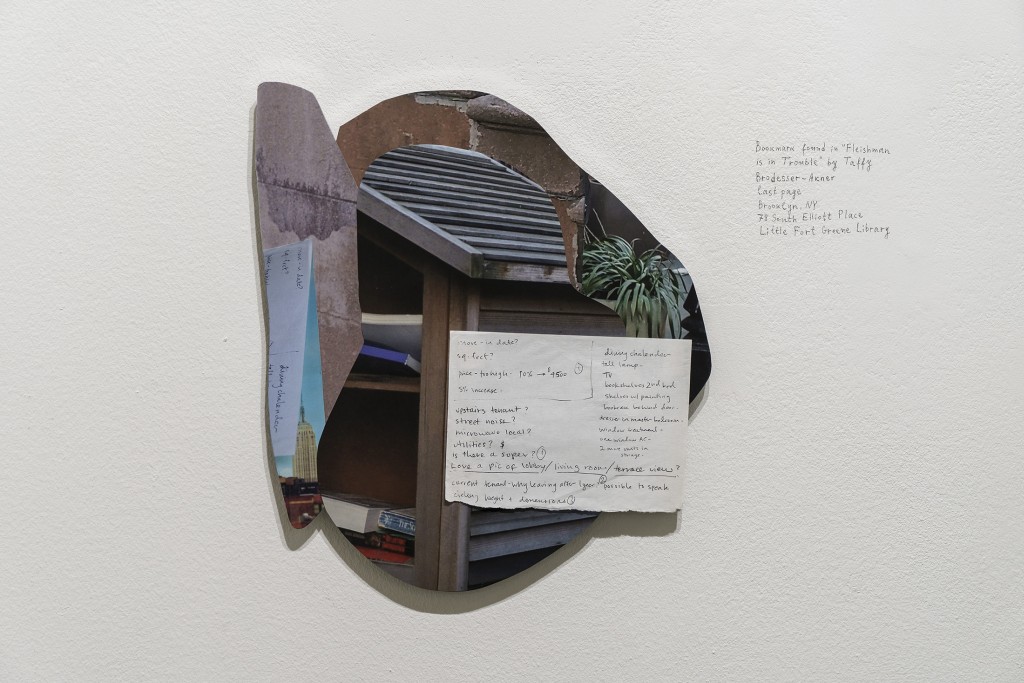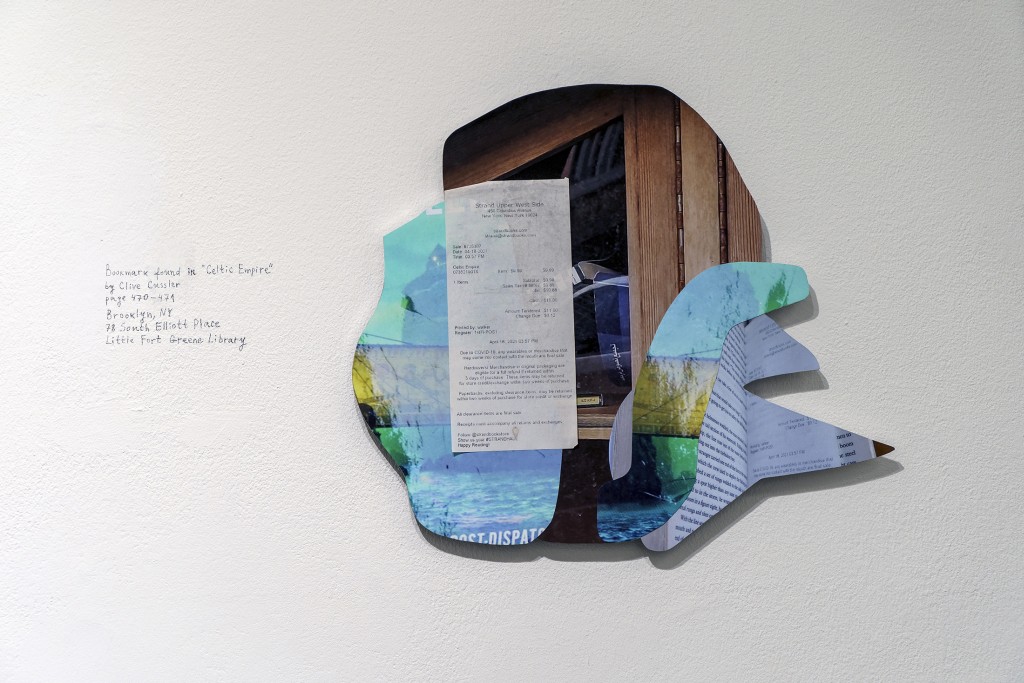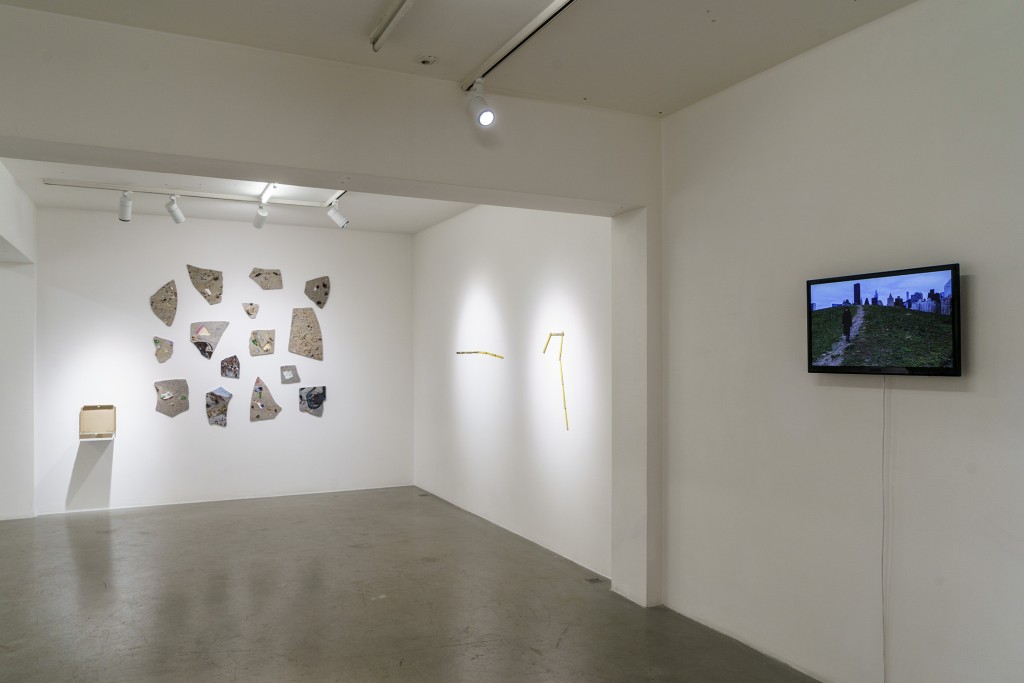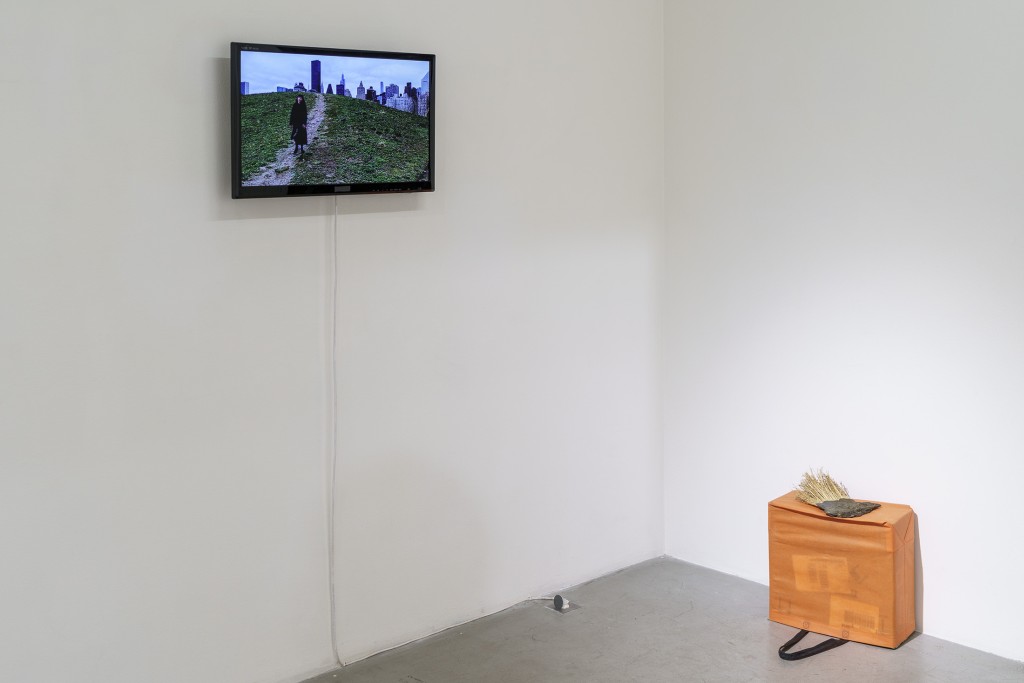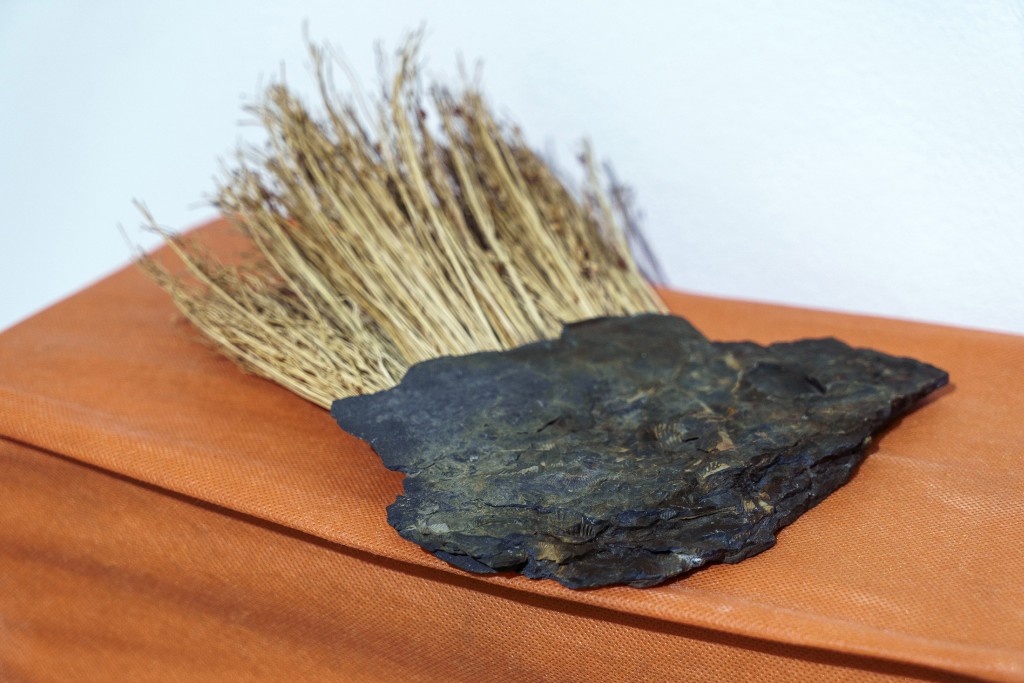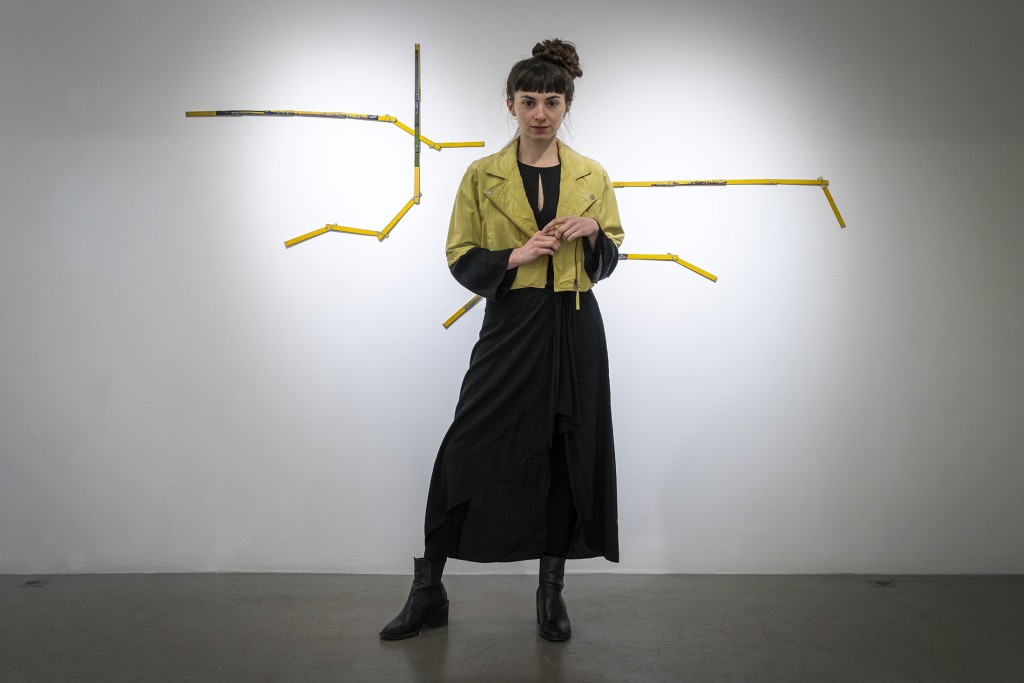Landscapes per meter, 2023
solo exhibition
Curator: Luchezar Boyadjiev
Institute of Contemporary Art – Sofia
24.02. – 07.04.2023
Photos by Kalin Serapionov, Maria Nalbantova & Vladislava Grigorova
Landscapes per Meter is inspired by the artist's residency Maria Nalbantova did in 2022 with the Residency Unlimited in New York City. As the winner of the BAZA Award for Young Artists for 2020, she spent two months in New York while experiencing the city in its various details as both a world of art and a place to live in. Landscapes per Meter is a space/time composition of memory fragments. These might be perceived as communication means, as traces, as evidences but above all as measurement units… Regardless of the concrete locale, the human eye and imagination tend to create panoramic impressions and discover interconnections. The human eye is noticing while the imagination is capturing for future “imaging”, things that reveal social/human relations and these are present all over the world. Sometimes these are bits and pieces left for markers within the pages of a book in the free, neighborhood libraries in Brooklyn – those small, wooden crates which look as if extracted straight out of a fairy-tale, except that they are full of books which local people leave, borrow, read and return in order to share access to literature for the enjoyment of all. At other times, these are pieces of broken glass or ceramics, horse's bones and old shoes scattered along the “beach” at the end of the world by the ocean in the so called Dead Horse Bay. The present of that location is just as controversial as the past. At the end of the 19th c. the Dead Horse Bay had hosted an incinerator facility for horses. After 1953 it became a dump/land fill for refuse left by the local inhabitants who had been displaced in order to make room for that “garbage paradise”. With time and erosion, the decades old sediments are engaged in a rhythmic cycle of “exchange” between the ground and the sea water. Is this place a dump; is it some sort of a museum; or perhaps nowadays it is just a place for the imagination? While in New York Maria Nalbantova was asking questions triggered by her discoveries of things and places in the city that attracted her because of their strange charm and the way people have made them lived-in environments – always human and easy to get, never ugly nor one-dimensional. For instance – take the small rose petals made out of synthetic material and scattered here and there in the Central Park of Manhattan. In fact these are “left overs” in spots around the park that have been designated for weddings and engagement ceremonies, for “romantic” selfies and family snapshots… Except for the memory of either participants and/or observing artists, these petals are outlining the perimeter of a massive memory “shadow” in the park, in spite of the park administration's effort to clean up. The scattered “leaves” are the time measurement of somebody's life just like a “scattered” or more to the point – an “absentminded” clock might do.
There are many ways and tools to use for measuring time, distance, speed, success or failure. While measuring the landscape in inches, steps or meters, we are yet faced with the rather more complex ways for measuring the tiniest fragments of memory – those fragments which construct memory within time. This exhibition is an attempt to share some points of intersection where the individual memory settles down as deposits within the multilayered history of the city. In New York – “The City that never sleeps”, the chances available for measurement are immeasurable… While asking questions about the measurement units, about coordinate systems and the ways for how humans relate to time, space, imagination, memory and so on, the exhibition reaches over to the grand tradition of Conceptual Art from the end of the 1960s in the USA and the rest of the world. The founding-father/mother artists of this trend as well as those under the influence of its aura, creative charge and critical potential, often reduced their creative output to the listing of dates, the definition of schemes for the production of an installation, to photographing fragments of reality as its “enumeration”, or to the visualization of digits and sequences of numbers on a 2-dimentional surface. They used many other approaches for the making of time more humanly accessible, and of space more alive with thought and vision without actually adding much to the already overloaded materiality of the world. Maria Nalbantova's exhibition offers another answer to the measurement unit question – the fragment as a (un)lived recollection/memory for something that some other human being has lived through and has left a trace of, by which act she/he has made us their unwilling inheritors. More than 25 years ago in the middle of the heated debates about art in the Bulgarian art scene, a colleague coined an amazingly absurd, and yet actual even today, phrase. He claimed that in New York “Conceptualism is sold by the kilo”… While Landscape per Meter triggers such associations, it is also somehow reminiscent of the obsessive attention to detail paid by the Dutch masters from the 17th c. It speaks about that closest of attention given to the construction of the world – not only as in the physics of the elemental particles, but also as in the physics of the micro-memory, and the sorrow for times past (while recalling The Physics of Sorrow by Georgi Gospodinov )
The international Young Visual Artists Award (YVAA) was established in 1990. It is one of the most enduring programs for cultural exchange between the USA and the countries in Central/Eastern Europe. As a joint initiative between the Foundation for a Civil Society in New York and the international network of the Young Visual Artists Award (YVAA), the BAZA Award was established in 2008 in Bulgaria after the initiative of Maria Vassileva. It is managed jointly by the Institute of Contemporary Art – Sofia and Edmond Demirdjian Foundation, in partnership with the Sofia City Art Gallery.

